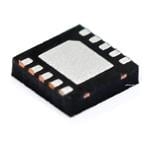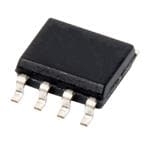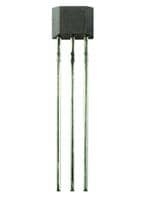What Are Sensors?
Sensors are electronic devices that detect and respond to changes in their environment. They can be found in almost everything around us. Sensors are used in a wide range of applications, from industrial equipment to consumer electronics, as well as in healthcare and environmental monitoring systems. Sensors can be designed to measure light, temperature, pressure, humidity, movement, chemicals, or other physical properties.
Sensors are used for many different purposes but generally fall into one of two categories: discrete sensors and continuous sensors. Discrete sensors typically send their data once per second or less often. These types of sensors include motion detectors and contact switches that operate using mechanical switches or optical detectors.
Continuous sensors collect data continuously over time and send it once per second or more often depending on the requirements of the application they’re used in. Examples include thermocouples, strain gauges, photodiodes , and inductive proximity switches.
4 Main Types of Sensors:
There are many different types of sensors available today, each with its own unique set of characteristics. The four main types of sensors are:
1.Light Sensors:
A light sensor measures variations in light intensity and converts these measurements into digital signals that can be used by other devices. Light sensors have many applications in robotics and automation systems, including automatic door openers. These use light sensors to detect when someone approaches so they can open automatically.
They’re also used in home security systems such as those found in alarm clocks or smoke detectors. These sensors detect light from their surroundings and convert them into electrical signals. They’re often used in robotics to help robots navigate their environment.
2.Vibration Sensors:
Vibration sensors are one of the most common types of sensors because they’re so versatile. They can measure a wide range of frequencies and intensities, making them useful in a variety of applications.
These sensors measure the amount of vibration generated by movement in an object or area. They use piezoelectric transducers to measure vibration on a horizontal plane and accelerometers to measure vertical vibrations. They’re often used in airbags for safety applications and motion detectors for security systems.
Sound Sensors:
Sound sensors measure sound waves in the air around them. These waves vary depending on what type of sound is being measured. For example, a sound wave from an explosion sounds different than one from a wind chime.
A sound wave also varies depending on where it comes from. Whether it’s from nearby or far away makes a difference in how loud it seems to us. The microphone is the most common type of sound sensor. It can be used to record or listen to sounds, but it can also be used to detect vibrations in objects or structures, such as walls and bridges.
Pressure Sensors:
Pressure sensors are typically used in automotive applications such as airbags, ABS brakes, and tire pressure monitoring systems. They can also be found in industrial equipment such as blowtorches, dust collectors, and washing machines.
The advantage of pressure sensors over other types of sensors is that they are able to sense changes in pressure that occur over time. It’s making them ideal for sensing wind speed for weather stations or airflow within machines like turbines or fans.
Pressure sensors measure the amount of pressure applied to them. These are used to detect physical pressure like when pressing your foot against something or touching your hand against something hard.
Sensors Products:
Sensors are used in a wide range of applications, from wearable devices to complex industrial processes. They can be found in cars and airplanes, as well as in many consumer products such as smartphones, tablets, and gaming systems. Taking EASYIEE sensors products as examples.
1.Temperature Monitors:
Temperature monitors are used in many different industries, including hospitals and laboratories, to help keep track of temperature readings in potentially dangerous areas.

Temperature monitors use infrared sensors to determine the temperature of a room relative to a set point. The temperature is then displayed on an LCD screen or transmitted by radio signal to a remote display unit. Temperature monitors can be used to control heating and cooling systems, or simply to monitor temperature for the comfort of occupants.
2.Thermocouple Amplifiers:
A thermal couple is a device used to measure temperature. It consists of two dissimilar metal wires twisted together with a fixed potential difference between them. When the temperature changes, the resistance of the thermocouple changes and this change can be measured using an instrument called an amplifier. The amplifier amplifies the small signal from the thermocouple so that it can be read on a display such as a voltmeter or digital readout.

Thermocouple amplifiers are available with different levels of accuracy and output range, depending on what type of equipment you want to use them. Thermocouples are often used for industrial processes where temperatures need to be monitored, such as furnace operations or heat treating furnaces. They can also be used in conjunction with other sensors such as pressure transmitters or flowmeters to monitor process variables such as steam pressure or air flow rate.
3.Magnetic Sensors:
Magnetic sensors are used to monitor the flow of magnetic materials in a pipe or container. These sensors are available in both fixed and portable configurations. These makes them ideal for use in a variety of industries including water, oil and gas, pharmaceuticals, food processing, power plants, and more.

There are two types of magnetic sensors: low frequency and high frequency. Low-frequency magnetic sensors are more sensitive than high-frequency ones, but they also require more power in order to operate properly.
2 Ways That Sensors Can Output:
Sensors are devices that detect, measure, and record physical quantities and transmit the information to a control system. The output of a sensor is an electrical or electronic signal.
There are two ways that sensors can output:
Analog Output:
An analog sensor varies its output voltage as the measured parameter changes. For example, an analog temperature sensor changes its resistance as the temperature increases or decreases. Voltage is a numerical representation of electricity’s flow through a circuit.
As the voltage changes, so do the current flowing through the circuit (the amount of electricity flowing at any given time). Voltage is what makes circuits work — without it, there would be no power for our computers or phones, but with it, we can power them up and use them!
Digital Output:
A digital sensor uses binary digits to represent data and has only two possible values: 0 (low) and 1 (high). This type of output is common in computers because it’s easy to process and understand compared with analog signals.
Digital outputs do not have a continuous range of values like analog outputs but they can only output two states – 0 or 1 (on/off). Digital outputs are most commonly used when only one state needs to be measured and it is sufficient to know whether something is present or not.
How Can Sensors be Used?
Sensors are devices that convert one type of energy into another. They do this so that they can measure and record information about their surroundings or the object they’re attached to. A sensor can be used to measure anything from temperature, pressure, light intensity, motion, and even sound waves.
Sensors can be used in all kinds of devices. If you’re riding a bike at night and don’t have a headlight on. The sensor will detect that there is not enough light and turn on your headlight automatically. When you drive through dark tunnels or parking garages and don’t get any visual feedback from your surroundings. Sensors can detect when you’ve entered the tunnel or garage so they can adjust the lights accordingly.
Sensors help with security systems. Smart home security systems use sensors to detect when someone is entering or leaving a room or opening or closing a door. The security system then sends an alert to your phone so you know what’s going on at home even if you’re not there.
Sensors can be used in medicine and medicine administration devices like insulin pumps and smart pill bottles. These automatically dispense medication when needed so people don’t have to remember when it’s time for their next dose.
How Do Sensors Work?
The simplest sensors detect only one parameter. For example, a photoresistor detects light intensity or a light-dependent resistor detects ambient light intensity. A thermistor detects temperature or a thermocouple detects the temperature difference between two points. A strain gauge senses the mechanical deformation of material by measuring resistance changes caused by strain in metal wires that connect them to external circuits.
There are also sensors that measure several parameters simultaneously. For example, liquid-level sensors that use capacitance to measure liquid height above their base electrodes. Some sensors consist of arrays of individual sensors integrated into one silicon chip or printed circuit board. Instead of having to use separate devices for each parameter to be measured. These multiplexed sensors allow for simultaneous measurements of multiple environmental parameters using only one sensor device.
Conclusion:
Sensors are a common and integral part of the modern world. They are used in almost every industry, from space to medicine, and have helped to revolutionize the way we live our lives. A sensor is any device that can measure a physical quantity such as temperature, pressure, light intensity, or sound level. The measured value is then converted into an electrical signal or digital code.
The electrical signal or digital code is then transmitted by wires or radio waves to a receiver where it can be processed and displayed on a screen or stored for later use. There are many different kinds of sensors with different capabilities depending on their application.





 2022-11-24
2022-11-24 


